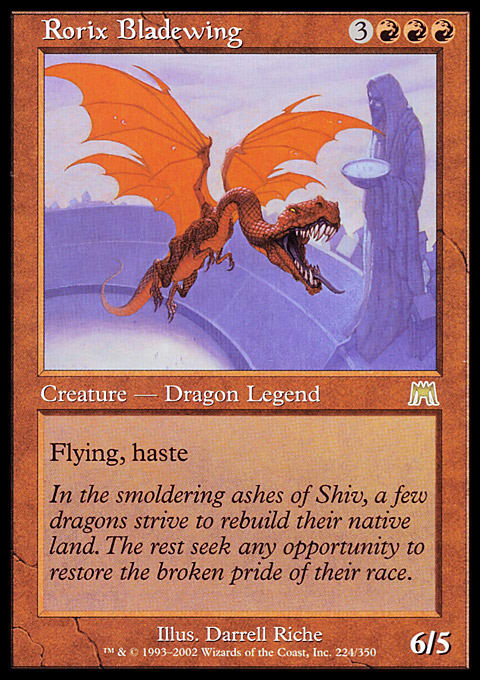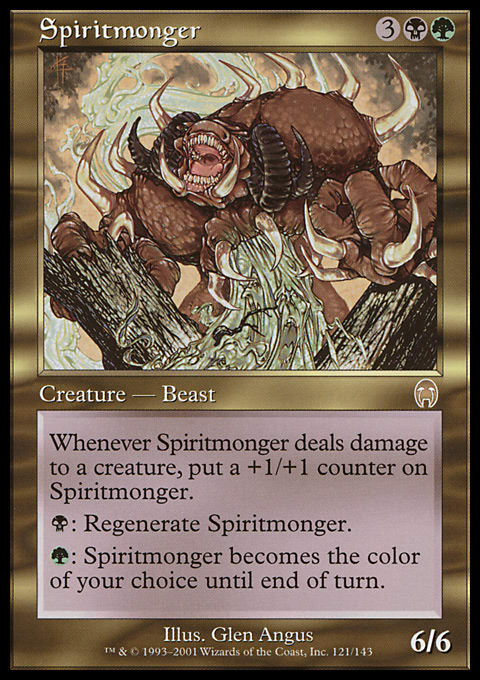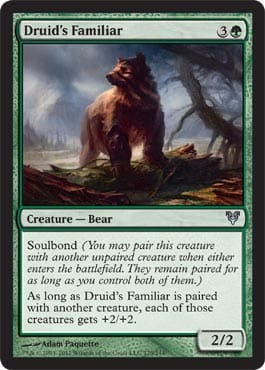I recently determined that although I wouldn’t be attending the Pro Tour in Barcelona, I would be going to the Grand Prix in Anaheim. As a result, I decided to prepare for the Grand Prix as though it were a Pro Tour: really seriously. I didn’t just grab a deck that did well at the Pro Tour, I applied a deliberate process to determining what the right deck for me to play would be.
Being in the Pro Tour Hall of Fame means many things to/for me. It means things about my past, present, and future. It means that in the past, I qualified for a lot of premier events, I played in a lot of premier events, I did really well in a lot of those events, and I played them with integrity.
While I’m proud of these accomplishments and I’m proud of being in the Hall, I don’t need or expect other players to give me special treatment for it; membership and the privileges that come with it are plenty reward for me. Probably the biggest privilege associated with being in the Hall is being invited to the Pro Tour for life. It enables me to do something I probably should have done earlier in my career, but something that might have keep me from making it into the Hall: I get to choose which Pro Tours to attend and which ones to skip.
Had I occasionally skipped Pro Tours during the height of my career, I probably would have fallen off the gravy train more often. During my record-setting streak of Pro Tours played in, starting with the first Pro Tour in 1996, I became unqualified for the Tour twice. The first time was after a disappointing finish in the first Pro Tour, and I immediately finished second in a Boston PTQ (Pro Tour Qualifier) that was giving away two slots. The other time was in 1998 and before playing in any PTQs—I went to Grand Prix: Indianapolis and qualified by making the Top 8 there.
My streak came to an end in 2004, after playing in forty-nine straight Pro Tours. This was a reward in itself: I got to do a ton of great travel, I met and became friends with a lot of very smart, very cool people, and I won a lot of money playing a game I love. Given how few times I fell off the gravy train, I was obviously pretty consistently good, or more accurately, every once in a while I would make a Top 8 that would qualify me for the next several Pro Tours.
The biggest challenge to maintaining my streak wasn’t actually amassing the necessary Pro Tour Points to stay qualified; it was amassing the money to afford traveling around the world four to seven times a year. Among other things, it was hard to find work that allowed for taking four to seven vacations a year in addition to several long weekends for Grand Prix events.
Of course, the threat of falling off the Tour by skipping a Pro Tour was a perfect way to justify to myself going into debt to attend each one. Being qualified for life has removed that excuse. While it’s great to represent the Hall by attending high-profile events, and I do try to conduct myself as an ambassador of the game, it’s not always fiscally responsible for me to attend, even with an appearance fee. It’s actually a little bit like trying to get started as an everyday poker player: You need a bankroll.
Like poker, even if you’re among the best players in the game (and one should never assume one is!), any given tournament might be one in which you come up empty. Even at the height of my career during my Pro Tour streak, it was common for me to miss finishing in the money multiple events in a row. I made eight Top 8s in those forty-nine events, however, so each Top 8 helped me pay off my debts and travel costs for the next few. However, even making a Top 8 every six events and several Top 16s didn’t keep me rolling in cash, especially since the Top 8s didn’t come at predictable intervals like a paycheck.
While it’s the fiscally responsible thing for me to be selective about which events I attend now, it has consequences. Probably the biggest is that it means it’s harder for me to reach and stay at the top of my game. There is nothing that helps me stay connected to the game and keep my game at a high level as well as playing in and preparing for Pro Tours.
My out-of-touch, pro-player “problems” aside, now I have to face life as primarily a local player who occasionally goes to a premier event like a Grand Prix—like most other players. During my streak, the intensity of high-level competition was like a drug. Now that I have fewer opportunities to get my fix, they are even more precious to me.
While I wasn’t able to attend the Pro Tour in Barcelona, I did find myself with the ability to attend Grand Prix: Anaheim. While not as prestigious as a Pro Tour, I was excited enough about it that I took preparing for it with great seriousness. Frankly, preparing for a Grand Prix these days is more like preparing for a Pro Tour used to be, since now every Pro Tour requires you to prepare for both Constructed and Limited. Instead, I’m able to narrow my focus to just Block Constructed.
Many people seem to have an image of pro players preparing for premier events inside some kind of medieval laboratory as they brew up fantastic new decks to take the world by storm. I’m not saying I don’t have a medieval laboratory, but this isn’t exactly how things work; there’s a process. It’s often less a process of deck design or brewing and more a process of deck selection. In a brand new format like at Pro Tour: Barcelona, deck design is a powerful and almost essential tool for prepping for the tournament. I say almost essential because even before Barcelona, there were various resources around the Internet where you could find a playable deck, if not a Sam Black production.
As I prepared for the Grand Prix in Anaheim, I had the decklists from Pro Tour Avacyn Resport as a powerful resource. Of course, so did everyone else. In addition, the fact that a deck did well at the Pro Tour didn’t mean that the deck would do well at the Grand Prix. Partially because the format was so new, the Pro Tour presented somewhat of a soft metagame. Some decks were successful because there were so many weak decks for them to play against in the field.
At the Grand Prix, players are able to cherry pick the absolute best decks from the Pro Tour, as well as make their own potentially even better decks inspired by them. A good example is the influence of cards like Bonfire of the Damned and Wolfir Silverheart. Bonfire was great at the Pro Tour, with many players playing decks full of small creatures such as Avacyn's Pilgrim, Scorned Villager, Lightning Mauler, Mayor of Avabruck, Borderland Ranger, Huntmaster of the Fells, Silverblade Paladin, and so on. Few players had a good plan to deal with Silverheart either.
Now the metagame will start shifting. Bonfire will be everywhere again, but it won’t be quite as powerful, as people buff up there decks to make them more resistant to it. Hellrider and Druid's Familiar will start to eat into Huntmaster’s stranglehold on being the 4-drop of choice for R/G. Creatures such as Strangleroot Geist and Wolfir Avenger will be everywhere, while cards such as Mayor of Avabruck and Scorned Villager will see less play. My teammate Rob Dougherty played a R/G Werewolf deck at the Pro Tour, which he piloted to a 7–2–1 record. Yet when testing for the Grand Prix, he seemed totally fine with moving forward onto a new deck, better prepared for the emerging metagame expected at the Grand Prix.
As I prepared for the Grand Prix, I tested decks I’d already been brewing myself, decks that kicked butt at the Pro Tour, and decks that used ideas inspired by the Pro Tour. I also read some articles by players such as Sam Black, who designed successful Block decks for the Pro Tour. This wasn’t because I expected them to design for me a new deck, but because I wanted their general insights about the format. One of the most helpful was an observation by Black that the format had passed Huntmaster by. He felt (and I agree) that the format was a hell-bent race to bring your opponent to 0, and Huntmaster not only wasn’t aggressive enough, but couldn’t kill enough relevant creatures in the format when he transformed.
The biggest problems with most of the aggressive decks at the Pro Tour were that they either had terrible mana, just died to Bonfire, or both. I made it my goal to play an aggressive deck that had stable mana. So, no three-colored specials for me, and it meant I was probably playing either mono-colored or base-green. While three-color green was the most popular deck at the Pro Tour, I expected a lot more of black/Finkel’s deck, reanimator, and the miracle deck at the Grand Prix—based on their successes at the Pro Tour. If I could build a fast enough aggro deck, I would be able to push reanimator and miracles off the table, while hopefully outracing black’s deck, especially if it had an imperfect mana draw.
I knew I wanted to play red. I love burn for my creature removal because I then don’t care whether my opponent has targets, and I can still win the game if my opponents shut down my creatures. It also meant I would have access to two of my favorite cards in the format: Bonfire and Devil's Play. So, I quickly narrowed my focus to mono-red and R/G. As of this writing (three days prior to the event), these are the two decks that I’m considering:
"Red Aggro"
- Creatures (24)
- 4 Fervent Cathar
- 4 Hellrider
- 4 Kruin Striker
- 4 Lightning Mauler
- 4 Stonewright
- 4 Stromkirk Noble
- Spells (12)
- 4 Brimstone Volley
- 4 Devil's Play
- 4 Pillar of Flame
- Lands (24)
- 24 Mountain
- Sideboard (15)
- 3 Grafdigger's Cage
- 2 Traitorous Blood
- 4 Bonfire of the Damned
- 4 Torch Fiend
- 2 Archwing Dragon
"R/G Aggro"
- Creatures (28)
- 4 Ambush Viper
- 4 Avacyn's Pilgrim
- 4 Borderland Ranger
- 4 Druid's Familiar
- 4 Strangleroot Geist
- 4 Wolfir Avenger
- 4 Wolfir Silverheart
- Spells (8)
- 4 Bonfire of the Damned
- 4 Devil's Play
- Lands (24)
- 15 Forest
- 7 Mountain
- 2 Kessig Wolf Run
- Sideboard (15)
- 3 Grafdigger's Cage
- 1 Witchbane Orb
- 3 Rolling Temblor
- 3 Zealous Conscripts
- 3 Lightning Prowess
- 2 Blasphemous Act
By the time you read this, the Grand Prix will be over, and the truth of the Grand Prix metagame will have been unveiled. I hope I’ll have been right, and even more so, I hope that I’ll have kicked enough butt that people will be anxiously awaiting some sort of tournament report. At the very least, I plan to take the time to explain why I chose to build these decks the way I did. Either way, I’ve enjoyed the process of preparing for this event as though it were a Pro Tour, and I look forward to attending more actual Pro Tours. Thanks for reading.
~ Darwin Kastle
@darwinkastle on Twitter
Darwin Kastle on Facebook



























